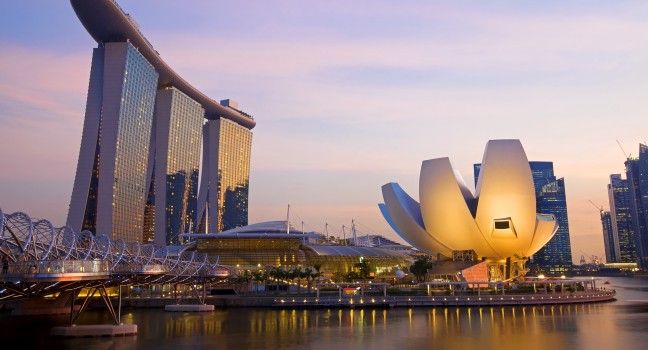5 Key Q&As on Water Price Rise in Singapore
Published on by Water Network Research, Official research team of The Water Network in Government
Singapore's ministers Masagos Zulkifli, Chan Chun Sing and Heng Swee Keat answered key questions MPs had on the water price hike. Here is a summary of their responses.

The price of water in Singapore have not increased in 17 years, but now that it has, there are numerous questions about it. Knowing the rice in water prices would cause a hype, the Environment Minister Masagos announced in the beginning of February the price change.
At Budget 2017, the prices were specified and the 30% increase was announced, justifying this by the expenses of desalination and high costs of building new plants, in addition to gradually introducing the increase.
However, the price rise posed some questions:
1. WHY MUST THE PRICE OF WATER RISE?
The price of water has to reflect what is called the long-run marginal cost (LRMC) - that is, the cost of supplying the next available drop of water.
This is likely to come from Newater and desalination plants.
As there is a limit to recycling used water in Newater plants, three desalination plants are being built within the next three years.
As more used water is reclaimed for Newater, the liquid waste is more difficult and costly to treat.
Building pipes to deliver water has also become pricier, as Singapore becomes more built up.
Pricing water right will ensure users conserve it, and enable investments in water infrastructure.
2. WHY HIKE THE PRICE NOW?
The price of water has not gone up in 17 years, since 2000. There is never a good time to raise prices, noted Finance Minister Heng Swee Keat.
But the costs of producing water are rising. PUB plans to invest $4 billion in additional water infrastructure over the next five years.
The Government is also making investments in the sewerage network. This includes the Deep Tunnel Sewerage System, which will be ready in 2025 and will cost more than $4 billion. Another $3 billion will also be spent on other sewerage network projects, and to strengthen the resilience of the island's water supply.
Also, water levels in Johor's Linggiu Reservoir, from which Singapore draws its water, have been falling in recent years, and climate change could worsen matters.
3. HOW DID 30 PER CENT FIGURE COME ABOUT?
The Government still needs to build more desalination plants and Newater plants. So details on the costs involved in aspects of water production are commercially sensitive, and revealing specifics could prejudice future bids. But Environment and Water Resources Minister Masagos Zulkifli told MPs that even with the 30 per cent hike, the price of water would be below cost.
4. HASN'T TECHNOLOGY HELPED?
Technologically, Singapore has squeezed everything it can from the current water processing technology. It will take several more years to achieve the next breakthrough and bring it to a deployable scale.
5. WOULDN'T THERE BE A KNOCK-ON EFFECT ON OTHER COSTS?
The price hike translates into 75 per cent of businesses seeing an increase of less than $25 per month in water bills - or less than $1 a day.
Some businesses have said they will not increase prices.
Extra U-Save rebates for households means those in one- and two-room HDB flats will not see any increase on average.
For other HDB flat types, monthly water bills will go up by between $2 and $11 per month.
Overall, spending on water will remain at about 1 per cent of household income for most families.
Source: Straits Times
Media
Taxonomy
- Water Supply
- Integrated Urban Water Management
- Integrated Water Management
- Water Supply
- Water Utility
- Consumption
- Infrastructure
- Utility Management
3 Comments
-
We are presenting worldwide a new process which relies on room temperature evaporation which is the only physical phenomenon separating pure water out of any saline water WITHOUT THE SUPPLY OF ANY EXTERNAL ENERGY. The energy needed is obtained by cooling the bulk of water (naturalseawaterdesalination.com = manufacturer of desalination equipment)
Room temp. evaporation is used by The Creator to avail for us the biggest supply of pure rain water. All the rivers of our planet are filled with pure water by room temperature evaporation. Unhappily, as usual our beloved civilization is unaware of what is right in front of their eyes.
Our simple equipment consumes < 3 kwh/m3, and cheaper than Chinese RO units.
Reverse Osmosis process is meaningless, using excessive energy, expensive high pressure pumps, expensive membranes, and micro pre-filters. Practically the expensive reverse osmosis is enforcing that worldwide sea shores are left desertedReverse osmosis publish false claims of very low energy consumption, which correspond to new membranes, membranes fouling fades these false claims quickly. The actual osmotic pressure is 70 atm for new membranes, after a month this pressure is beyond 90 atm
-
Zero carbon, low cost, low maintenance, no chemicals, no filters buoyant desalination. Details from rosjonesenvedu@hotmail.com
-
Singapore PUB does a great job producing, storing, replenishing and distributing water. It is amazing that there has not been a price hike in 17 years. They are world leaders in water technology, too. Water cost of 1% of household income is very low. We should all be so lucky.